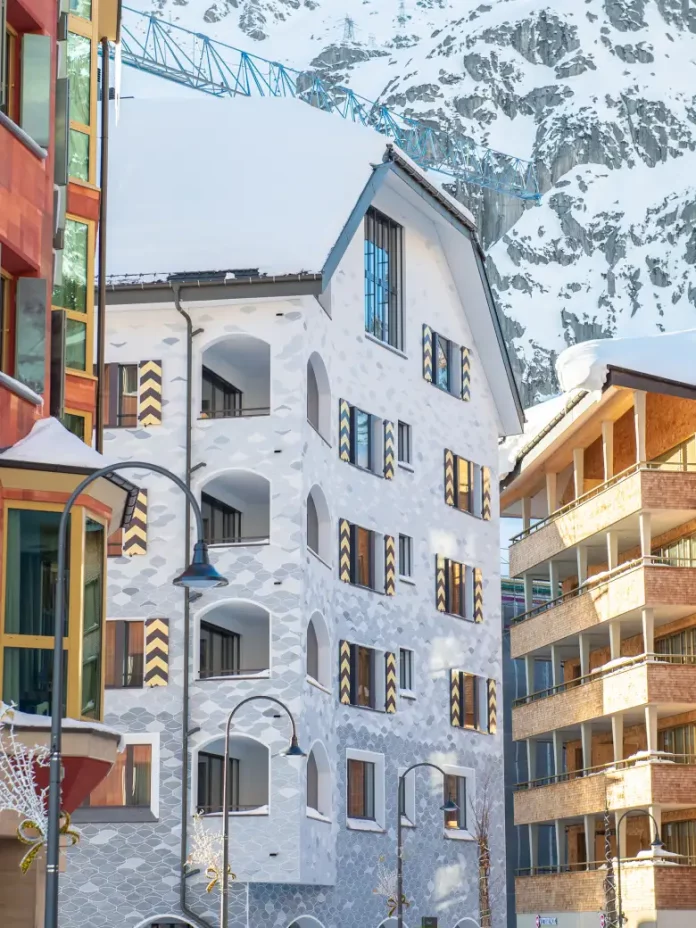BusinessToday recently interviewed Stefan Kern, the Chief Communication Officer and Head of Sustainability at Andermatt Swiss Alps to understand how sustainability has become a buzzword for the tourism world and what other travel destinations learn from the Andermatt Swiss Alps.
“Sustainable tourism has become the buzzword for 2022 as pandemic-weary travellers are more committed than ever to travel in a more mindful and responsible way. 81% of respondents polled in Booking.com’s 2022 Sustainable Travel Report reported that sustainable travel is important to them,” said Kern.
“Issues such as excess waste, threats to local wildlife and natural habitats, carbon emissions and respect for the local community are some of their biggest impact concerns,” he added.
“At Andermatt, we aim to create sustainable designs that not only reflect the breath-taking landscape surrounding the village but also minimise our impact on the environment. We build preferentially with natural materials and are always in accordance with the Minergie standard (most advanced construction standard in Switzerland). Besides, we also put emphasis on the responsible treatment of resources and a sustainable economy. We offer our guests the very best of Switzerland with 365 days of adventures in nature, be it skiing, snowboarding in winter, playing golf or venturing on long, mountainous hikes. We’ve seen heightened interest recently from travellers who are looking to enjoy the great outdoors, with many of our guests seeking an alpine lifestyle away from the city,” Kern elaborated.
“What is the Andermatt Responsible campaign and some of the positive impacts from it?” BusinessToday asked.
“Andermatt Responsible is our campaign which advocates for sustainable, climate-friendly tourism in the Andermatt region. It is our eco-friendly promise to protect and maintain the local surroundings and environment. The aim is to facilitate tourism operations in a way that preserves resources. It is our remedy to over-tourism that has left a detrimental impact on other holiday destinations. We have implemented a number of sustainable initiatives across several areas including energy, outdoor, mobility, real estate, hospitality and gastronomy that have resulted in the region, i.e. Remaining 100% Carbon Neutral; Becoming Plastic-free; Car-free policy; Supporting Community Projects,” Kern remarked.
“What is Swisstainable and what does it take to achieve that label?” BusinessToday asked.
“Swisstainable is a movement launched by Switzerland Tourism (ST). It is a strategy for the sustainable development of Switzerland that aims to help the country’s tourism industry. It is also a way to show the tourists what businesses have put into place in terms of sustainability. The main objective is to inspire and motivate tourists to travel in a sustainable way. The Swisstainable movement is open to all businesses and organizations in Swiss tourism and the Swisstainable label can be used by all providers. The label comes with three levels; Committed, Engaged and Leading,” Kern explained.
“Please elaborate on these three levels,” BusinessToday asked.
“Level 1 denotes Businesses commit to sustainable business management and to further developing their business continuously towards sustainability. While Level 2 denotes businesses are committed to sustainable business management and ongoing further development in sustainability. In addition, these businesses have a recognised credential in at least one
sustainability dimension. Finally, Level 3 denotes businesses have a comprehensive, recognised sustainability credential that covers all dimensions of sustainability and is regularly audited by third parties,” he remarked.
“How is the Andermatt Swiss Alps championing climate change? How has its sustainability initiatives impacted tourism in the region for the better?” BusinessToday asked.
“At Andermatt, we work with skilled architects and renowned interior designers to create hotels and apartments that maximise comfort, providing the best in contemporary living while improving building performance,” he said.









